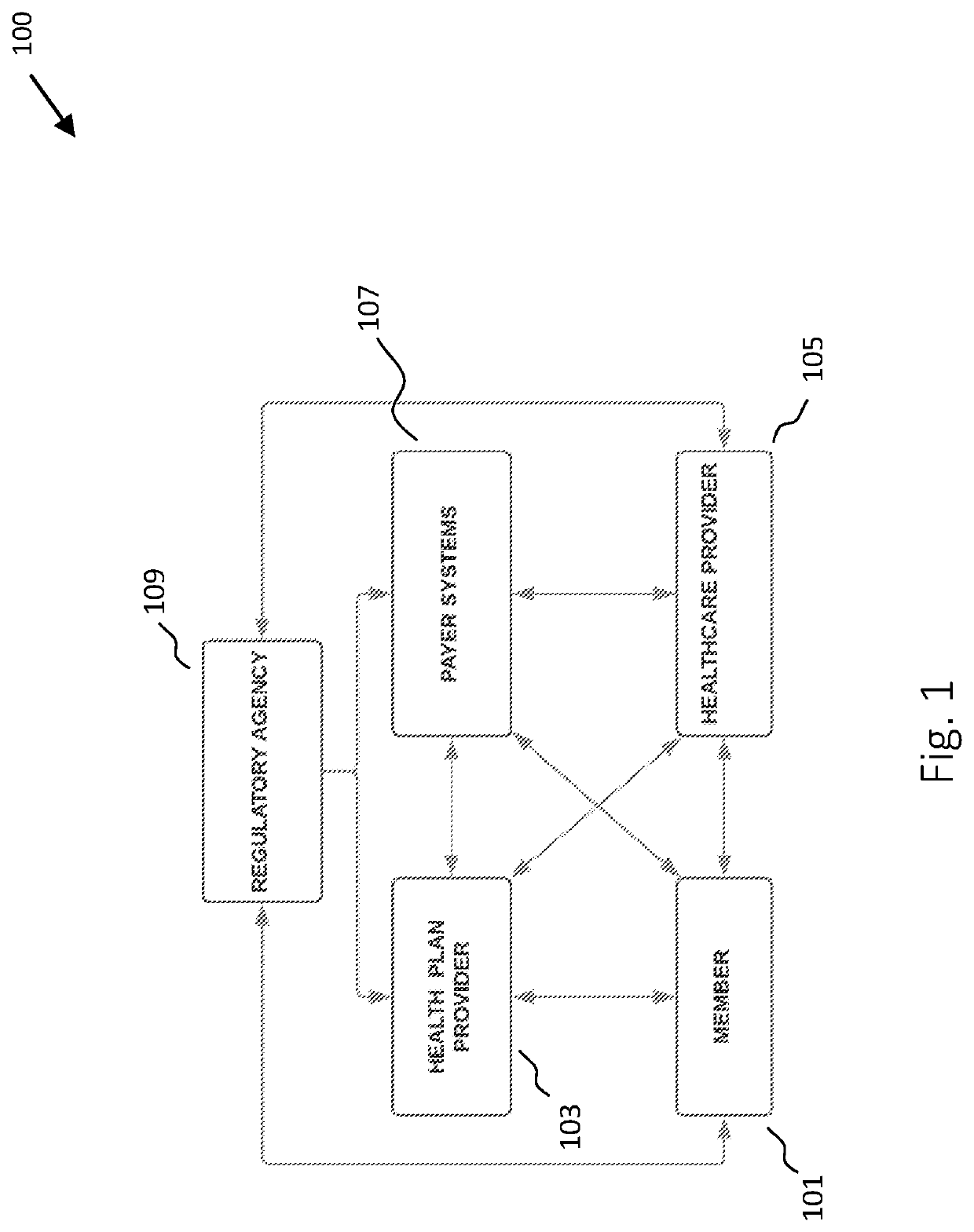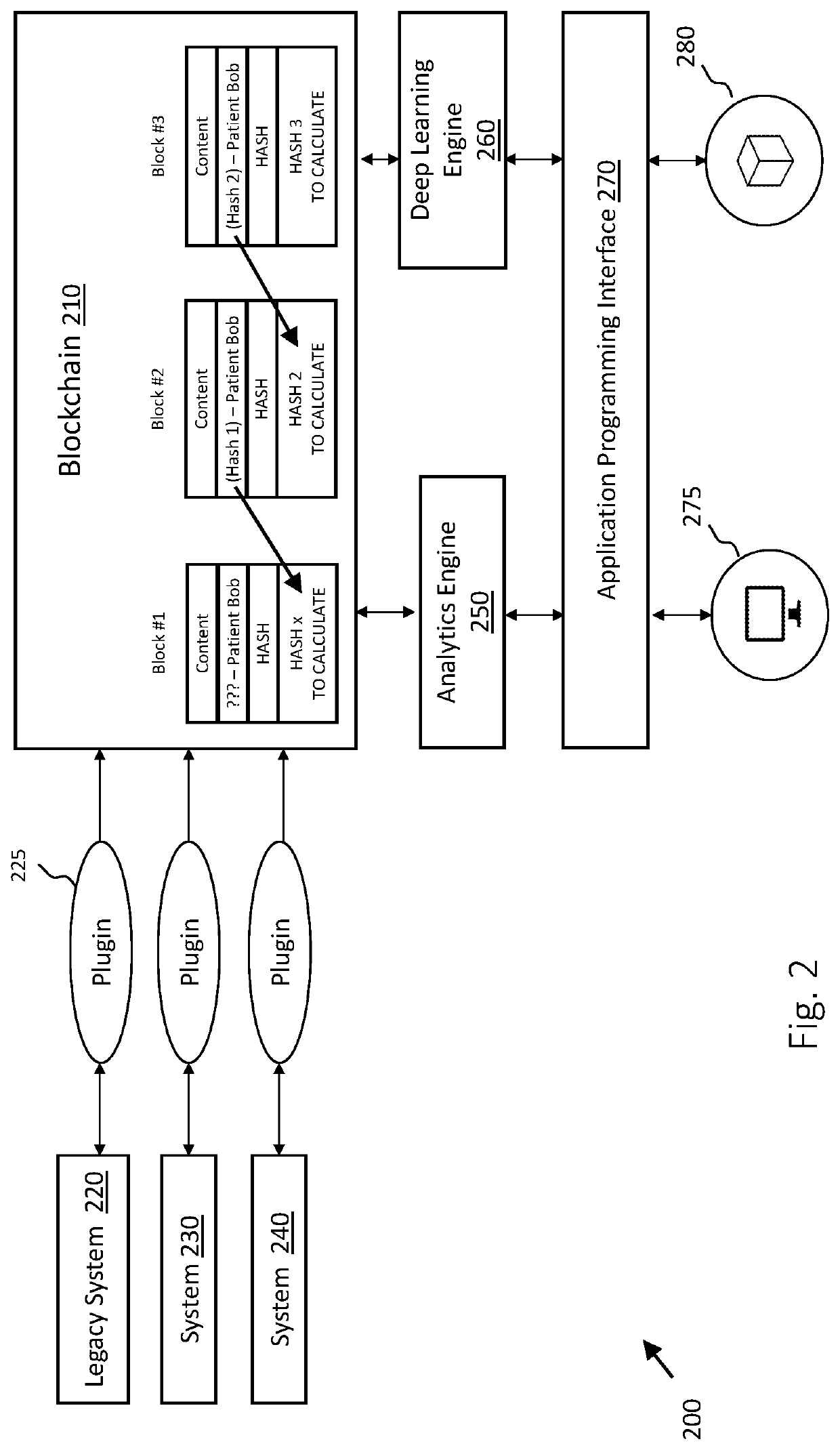Systems and methods are disclosed for monitoring, recording, verifying, auditing, and executing healthcare communications, decisions, and transactions using centralized storage and
blockchain technology. The healthcare communications relate to communications between a patient, doctor, specialist, healthcare provider, a private or government entity that processes and reimburses healthcare providers, insurance provider, and a healthcare facility.Systems and methods are disclosed for
processing, monitoring, recording, verifying, auditing, and executing healthcare communications, decisions, and transactions using centralized storage and
blockchain technology. The healthcare communications relate to communications between a patient, doctor, specialist, healthcare provider, a private or government entity that processes and reimburses healthcare providers, insurance provider, and a healthcare facility.In one embodiment, the
system processes a healthcare transaction that relates to
medical care provided for a patient that has a
medical health plan. The method involves providing a centralized control manager for obtaining, storing, and analyzing healthcare
transaction data.The centralized control manager is connected to a
central database and utilizes the
central database for storing healthcare data. The centralized control manager operates through a processor. The processor executes instructions stored in the
database leading to the centralized control manager performing its functions.The centralized control manager is electronically and communicatively connected to at least two entities that are part of the authorized entities within the
computer network. These entities may include a patient, doctor,
primary physician, specialist, payer
system, health plan provider, and government entity such as Medicare. The centralized control manager allows
bidirectional communication with the centralized control manager and other authorized entities that are allowed to communicate with the centralized control manager and use an electronic device over a computerized network. Communications directly between the entities is also contemplated.The entities electronically execute a healthcare transaction. The centralized control manager records each executed healthcare transaction into the
centralized database as well as posts the transaction to the
blockchain. Each entity performing the transaction also posts the details of the transaction to the blockchain. Details include the time and date of transaction, the parties involved, and other details of
medical care provided to the patient relating to the transaction.A prediction engine, utilizing
machine learning technology, uses the data of all the transactions obtained to continuously enhance and predict the outcome of future transactions and make suggestions as needed. If any transaction deviates above a certain limit, e.g. a medical claim is filed or a medical code is entered that does not fall within a set limit, the prediction engine flags the transaction for review and optionally alerts the entities involved in the transaction.All of the transactions are replicated to the blockchain by multiple entities in the
computer network. These include the transacting entity, the receiving entity, and the centralized control manager. Posting to the blockchain allows for
verification and
authentication of the transactions.
System and methods also allow automated claim adjudication and dispute resolution between two parties in the healthcare environment. The claim adjudication and dispute resolution relate to
medical care provided for patients who have a
medical health plan.The
system includes a
server computer and a computing device. The
server computer is comprised of a
central database and a processor as well as a
server application that is stored in the central
database. The computing device includes an electronic device having a
client processor and
client database. Both the server and
client are communicatively connected.In this embodiment, a Healthcare Provider executes a transaction that is recorded in the
centralized database as well as in the blockchain. The server computer electronically stores the data of the healthcare transaction in the central database and provides access of the transaction to the Healthcare Provider, Payer, and other relevant parties.Thereafter, the Healthcare Provider files a dispute with the Payer
System. The server computer electronically sends an alert to the relevant and authorized parties informing them that a dispute has been filed. The server processor then obtains data from the central database, blockchain, and any other relevant data provided by other parties in the
computer network that relate to the disputed healthcare transaction. The processor then parses the data, resolves the dispute, and posts the results to the centralized server and blockchain.
 Login to View More
Login to View More  Login to View More
Login to View More 


